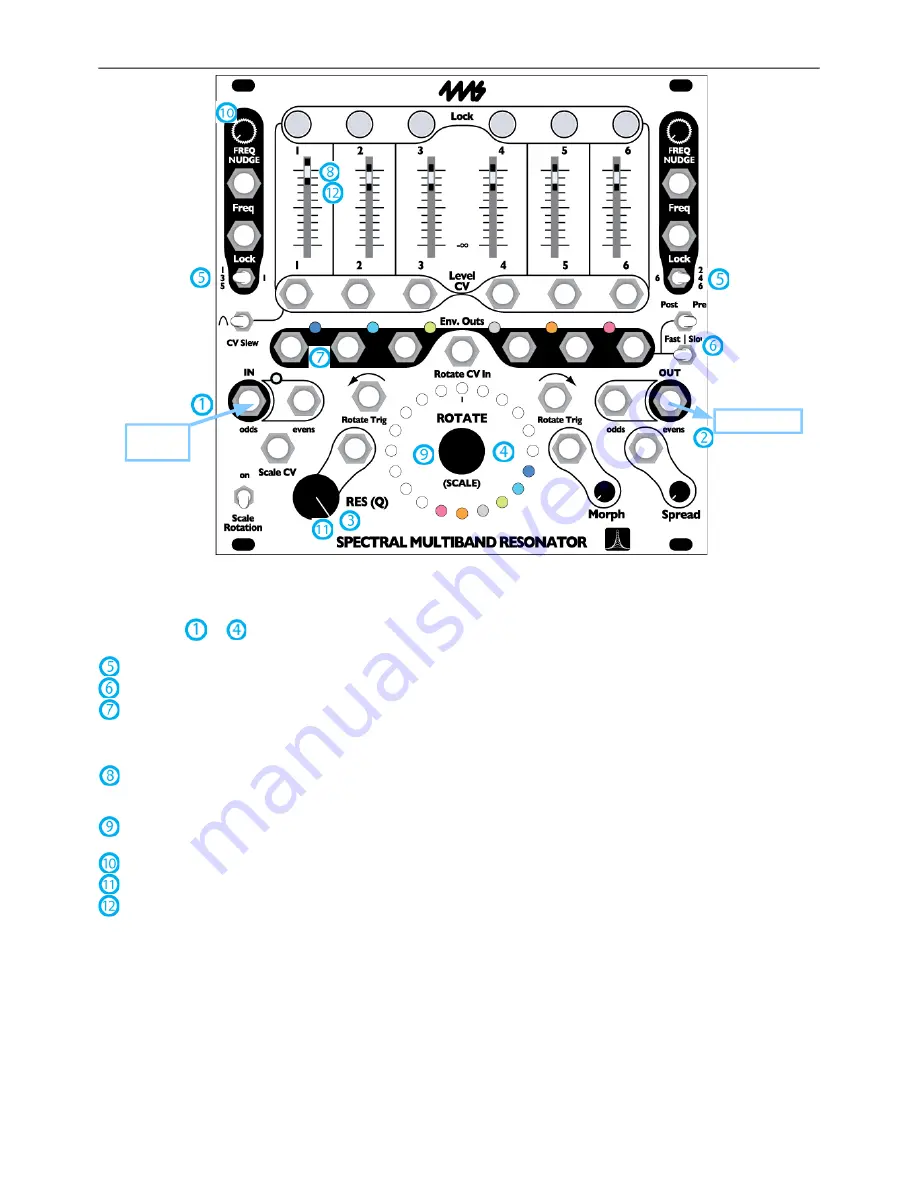
Beat syncing: advanced re-mix techniques
This patch idea is a powerful way to sync your modular system with an external audio source-- whether it's a pre-recorded
track or a feed from other instruments being played live. The basic idea is to convert different frequency bands into trigger
outputs, with the rhythm of the triggers matching the rhythm of the original audio's instrumentation.
Start with step
to
of the Re-mix patch on the previous page (patch audio inputs and outputs, turn down RES [Q] and
select the EQ bank).
Set the 135 | 1 switch to 135, and the 246 | 2 switch to 246.
Set Fast | Slow to the center position (triggers), and set Post | Pre to Post. Set Scale Rotation down.
Let's say you have a dance track with a kick, snare, hi-hat, and some melody lines happening. You can use the SMR to
convert each kick drum hit into a trigger output, which you can use to trigger your own kick drum (or clock your master clock,
or trigger anything on the modular). Start by patching the ENV OUT jack for channel 1 into something that makes sound when
triggered.
Turn down all the sliders and bring up the slider for channel 1 to around 50%. Listen to the SMR's output as well as the
externally triggered module. You might want to monitor the input audio, too (use a mult or splitter before the SMR).
There are four parameters to play with to get beat-synced trigger outputs: Rotation, Freq Nudge, Q, and Level (steps 9-12):
Turn ROTATE so that channel 1 is triggering the external module whenever the kick drum hits. Probably for a typical kick
drum, channel 1 should be on the 2
nd
, 3
rd
, or 4
th
note (it depends on the pitch of the kick you're trying to tune into).
Set Freq nudge to dial in a frequency in between two rotation spots.
Turn Q up to narrow the band. Around 50% is a good place to start for syncing to drum sounds.
Set the Level slider to set the threshold at which the trigger fires. If you set it too high, the Env Out light will stay on, and it
it's too low it'll stay off. If the slider seems to have no effect, double-check Post | Pre is set to Post.
When you get a good lock, press and hold the lock button while you wiggle the Q knob, the release. Press the Lock button
again. Now the channel should be locked and Q-locked. Its Lock button will be on with a quick periodic flicker off.
Repeat 9-12 for the next channel, perhaps do the snare or a hi-hat next. Make sure the channel is locked before you move to
a new channel, or else you'll lose your settings.
Advanced: Use an external CV source (try a SISM) into the Level CV jack with the slider all the way up. This way you can
mute/unmute a channel using the slider and not lose your level setting (since it's set on the SISM).
When you like what you hear, save your settings. Hold the ROTATE button down for 5 seconds until the Lock buttons flash
and an animation appears on the slider LEDs. Release the ROTATE button. If you want, you can spin the ROTATE knob to
choose a new color scheme for these settings. Each Lock button represents a Settings Slot (1-6). If you wanted to load a slot
you could tap any of the Lock buttons. But in this case we want to save our settings, so press and hold any Lock button for 2
seconds. The SMR will pause for a fraction of a second while it saves all the settings into that slot. The next time you power
on the SMR, these settings will be loaded automatically.
7
Audio
track
TO MIXER
















